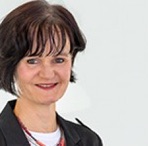Economic Strategies to Manage the Crisis: Austerity or Government Investment Programmes?
-
Overview
-
Background information10 Topics
-
Introduction
-
Instruments to respond to economic imbalances: fiscal and monetary policies
-
How do the two models suggest responding to economic imbalances with the policy instruments?
-
Consequences of each economic policy choice
-
The Big Depression and the Keynesian model
-
The oil crisis and the end of the Welfare State
-
The neoliberal model and the 2008 financial crisis
-
The conservative response: austerity
-
Counter-cyclical response: what government investment could look like
-
Glossary
-
Introduction
-
Endnotes
-
Glossary
-
References
-
Interactive learningDeepen your knowledge1 Topic|1 Quiz
-
Training materialExercises for group activities6 Topics
Introduction
What is a crisis? A crisis is a concept that in general terms refers to a situation of disturbance, and in economics it is no different. Economic crises are those moments in which, for a wide variety of reasons, the economic variables destabilize.
The most common indicators of a crisis are the imbalances that manifest in increasing levels of unemployment, inflation, business inactivity, poverty, etc. In this sense, crises may occur as a natural moment in the economic cycle, or they may be the consequence of specific shocks, most commonly in recent decades as a product of globalised economic dynamics.
What is the difference between a crisis and a recession?
The capitalist dynamic has been qualified as the cyclical process of fluctuations of diverse signals of different magnitudes. It is normal to find phases of expansion and accelerated growth following phases of depression and stagnation, as shown in Figure 1.
An economic cycle is that period of time in which expansion of the economy (GDP growth) is followed by a crisis in the rate of accumulation which then becomes a recession, which bottoms out at a given moment reaching the trough or depression, from which economic expansion begins again. (2)
A recession is the phase of slowdown in economic activity in which consumption is reduced, leading to a decline in production, real income and employment. This recessionary phase can be more or less extended in time, but is generally considered to be of shorter duration than the depression.
While the graph shows that the crisis is a disruption that changes the trend of the expansionary phase as commonly explained in textbooks, in our daily understanding, the crisis is often associated with the depression phase.
The depression is the moment when the recession bottoms out or in other words when the recession is sustained over time and becomes more severe. What follows a trough is necessarily an upturn phase where the economic variables start to recover. In these situations, when the imbalances come to produce a crisis in an economy, it is necessary to try to reverse the situation to regain the equilibrium. Precisely, the chosen strategy and beneficiaries of that recovery depend on political economical decisions, and these aspects are the ones we will try to illustrate in this dossier.
How to do it in the best way is the question that economists and policymakers ask themselves, and, as it is easy to imagine, the formulas for action do not always agree. Each school of economic theory formulates different behavioural hypotheses, and different conclusions and practical recommendations. To understand the different positions, the two models of general reference in economics are posed, mainly the Neoclassical school on the one hand and the Keynesian analysis on the other, and the different propositions that each one of them follows.
- The theory: two opposed models
All the macroeconomic relations have a quantitative dimension that must be closely followed and recorded in order to manage or intervene in them. The potential policy responses available represented by the myriad economic theories present discrepancies, as will be shown.
The neoclassical model
The neoclassical model assumes that, at a given moment, there is a productive capacity (which we will call total or aggregate supply) determined by the number of factories, machines, equipment, etc. (physical capital) and workers (human capital). Further, it assumes that prices are always flexible. This flexibility is what would allow supply and demand to always return the economy to equilibrium at full employment. When there is an oversupply of a resource that results in its surplus, its price would drop (the wages would drop) and then its demand would increase, thus automatically correcting the existing unemployment.
The main idea of this so-called liberal model is that to achieve equilibrium with full employment it will be enough to make prices completely flexible and allow markets to function freely. Exogenous interventions of any kind would be useless to correct imbalances, since imbalances are supposed to resolve on their own as a function of the freedom of markets and flexibility of price. According to this model, iInterventions will only lead to economic inefficiencies by causing either price increases (inflation) or displacement of individual spending. The latter might happen as rational private agents, who realize the State’s increasing deficit, foresee that taxes will be higher in the future and therefore would rather save than consume.
The Keynesian model
The starting hypotheses of the Keynesian model present a different vision of the operation of the economy and reach very different conclusions. The main difference is that for Keynes, prices are rather rigid, that is, that they would not respond to changes in demand. And he thought that this rigidity especially affected wages because workers are usually not willing to accept lower wages than they receive at any given time.
If we are standing on a level of production that does not have the capacity for full employment, it means that the demand of employment is lower than the supply. The capacity to achieve full employment could be propelled by increasing the aggregate demand which would result in the creation of more employment opportunities. Therefore, according to this model, the State’s interventions aimed at increasing aggregate demand would be very useful and necessary in order to increase production when the economy is below full employment. Only when the economy has reached its full employment level could any further intervention increasing the demand cause an increase in prices.
2 – It is important to emphasize that the idea of economic crisis as a phase of a cycle is one of the ways to approach its concept, but not the only one. In general, the concept of crisis is framed within various thematic blocks linked to growth and economic cycles, macroeconomics, current crises and/or public sector intervention.







